Unearthing stories hidden in the bones of a forgotten burial ground
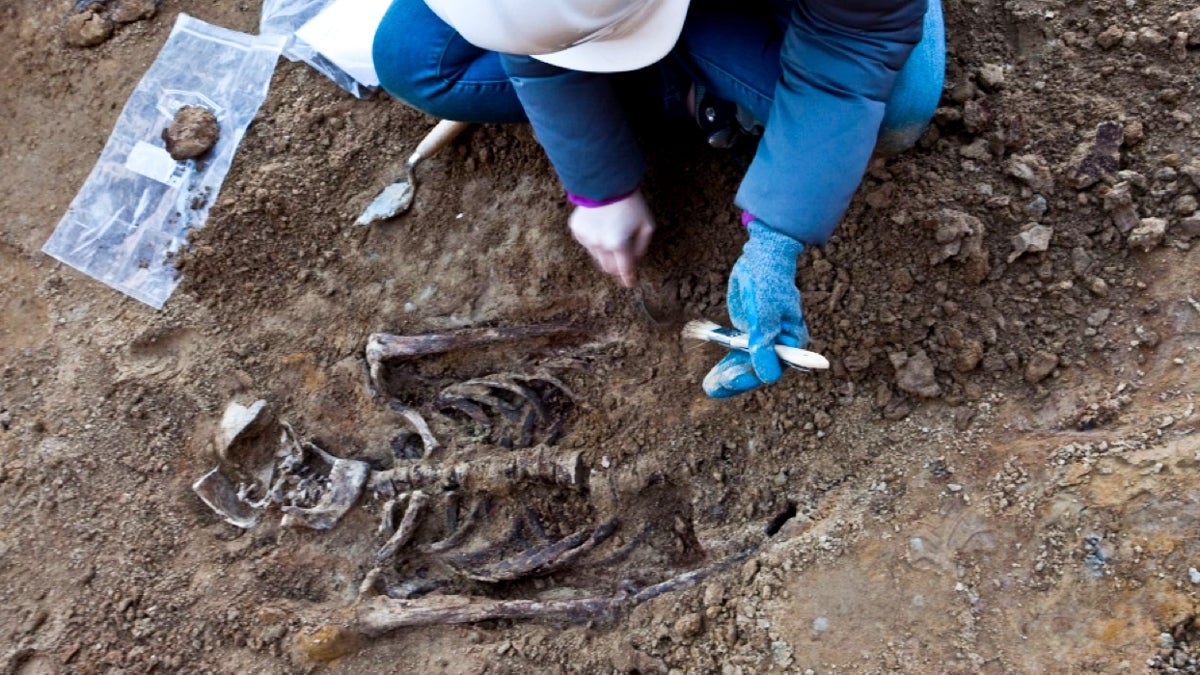
Elana Gordon digs into an emergency excavation at a site in Old City being developed by PMC Property Group, after workers discovered a box of old bones. Volunteer forensic scientists have now stepped in to unearth the stories left behind by the Philadelphians buried at the First Baptist Church cemetery. This story is part of an episode of The Pulse, a national health and science show and podcast based at WHYY. The episode is called Becoming Visible and you can find it on iTunes or wherever you get your podcasts.
It was bound to happen in a city as old as Philadelphia.
Last fall, in the heart of the nation’s first capital and just a stone’s throw from the Liberty Bell, construction workers unearthed a box full of bones as they were setting the foundation for an up and coming condominium.
The scene sparked publicity, confusion, and questions. Who did these bones belong to? How old were they, and would construction workers find more of them as they dug deeper?
This wasn’t an active investigation, the medical examiner ruled, but, beyond that, next steps lacked clarity. With the discovery made on entirely private land by a private individual, the city said it couldn’t intervene. Citing the state’s only legislation on intervening with historic burial places, the Pennsylvania Historical and Museum Commission also didn’t see a clear path to step in, stated spokesman Howard Pullman in an email, “even in this extremely negative situation.”
Watching this go down was “maddening” to preservationists like Douglas Mooney, President of Philadelphia Archeological Forum. The Orphans Court Division of the Court of Common Pleas has jurisdiction over unmarked burial grounds, Mooney said, but an agency or company has to first to petition and kickstart that legal process. In this case, it didn’t happen, he said.
So now what? Who’s responsible? The lack of oversight ignited concerns among Mooney and others as to how public and private agencies should handle important remnants of the past.
In the meantime, a small crew of volunteer forensic experts swept in. Anna Dhody, a curator at Philadelphia’s anatomical museum, the Mütter, reached out first.
“My instinct was these are human beings, they’re in a cardboard box in a trailer on a construction site,” Dhody recalled. “The least we can do is put them back where we know they should be.”
In this case, the place where they should be is Mount Moriah Cemetery, a spot on the outskirts of Philadelphia. It’s where the historic First Baptist church cemetery was supposed to have been fully moved in the mid 1800s, though evidentaly it wasn’t.
The developer was on board and let Dhody in.
With a background in physical anthropology, Dhody was also deeply curious about these individuals, and she wondered what information could be gleaned about them and their lives. She and others saw this as unique chance to preserve and pay respect to some of Philadelphia’s oldest citizens.
“We got temporary custody, with the idea of cleaning, conserving, doing some analysis, and ultimately reinterring them,” said Dhody. “Ultimately, it was a win, win.”
But in February as workers drilled deeper, remnants from the original First Baptist Church’s 300-year-old burial ground were suddenly visible, and the workers hit more bones, and then coffins — stacks of them.
The developer, PMC Property Group, again connected with Dhody, granting her access to the site. The company also agreed to halt work in early March, allowing her and a small team of volunteers in to lead an excavation.
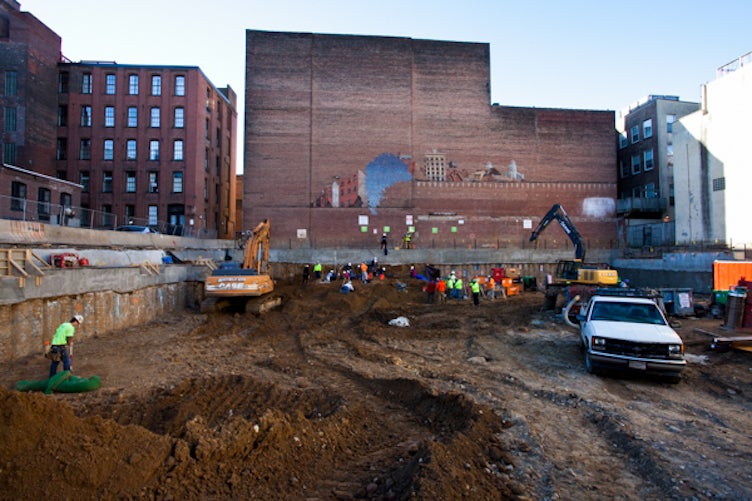
An emergency archeology operation
“It was crazy,” recalled Dhody. “It was throw on some work clothes and get down there!”
Normally, digs like this span months or years, as workers carefully map and handle what’s uncovered. Each detail can hold clues to the stories hidden in these bones. The crew had a little over a week to salvage what they could in the cold.
“We would monitor the backhoe and when we saw something appear we’d do our best recover it, take photographs, document it very roughly, and remove remains and put them in box,” said Kimberlee Moran, an archeologist at Rutgers-Camden who also led the charge.
Moran and Dhody put out the bat signal — or rather, trowel signal — for backup.
“I just went down one day and said, ‘Is there anything I can do to help out?'” said George Leader, an archaeologist at the College of New Jersey.
Yes, Dhody and others responded. Roll up your sleeves.
“It was difficult with a backhoe working around you, lots of other jackhammers going on in other parts of the site,” Leader said.
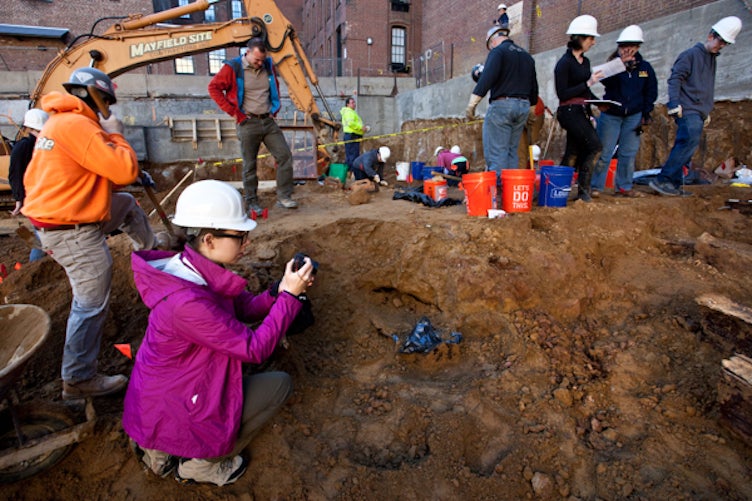
40 or so forensic volunteers, with the help of the construction workers, unearthed the remains of close to 80 people.
In the scurry to get each one of the remains safely stowed away, they wound up scattered among three locations. Some are in one of Dhody’s rooms at the Mütter Museum, multiple boxes are in one of Moran’s labs, and the rest are stashed away at a third party storage unit in South Philadelphia that the developer helped coordinate.
Phase II: Counting skulls and crowd funding
A few weeks after the dig in mid-April, Dhody, Moran, Leader, and another colleague, biological anthropologist Jared Beatrice, reconnected for the first time to begin the daunting task of detailing what they had and figuring how much space they’ll need to properly house everything in one place.
“We’re opening up the plastic on these coffins and measuring the size of platter they’re sitting on,” Moran said through her face mask and white lab coat.
The crew entered with concerns that some of remains had become moldy.
Dhody was excited but stressed.
“Now that the weather is getting warmer, it’s really imperative that we get them out,” she said.
Leader was hopeful.
“I think we’re going to find some really interesting things about Philadelphia and ultimately our nation’s history,” he said.
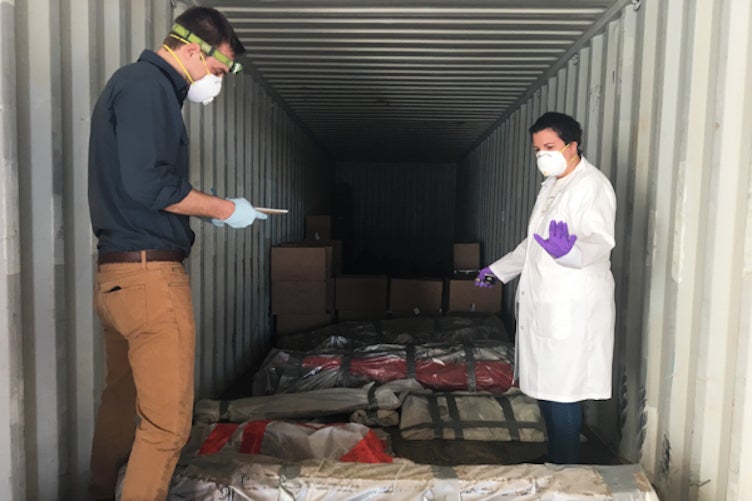
At first brush, everything seemed in good shape. The plan is to move it all, as soon as possible, to a central, secure, and temperature-controlled space at the College of New Jersey.
But, logistics aside, this next phase will involve new challenges. Excavation was just the first step in gleaning details. Many of the remains are all mixed up in boxes, with random bones unassociated with any particular individual, and even in a mix of trash bags that construction workers had set aside before the forensic volunteers arrived for the formal dig.
The crew will have to go through bones, taking meticulous notes to piece together clues.
They’re beginning that more granular process back at Moran’s lab, where the rest of the remains are in temporary storage.
Despite the challenges, this is archeology heaven for them. They’re like kids who’ve found the secret candy drawer — except for them, it’s bones and skulls.
Dhody and Beatrice carefully look over the facial contours and skull sizes, some of which seem unusual.
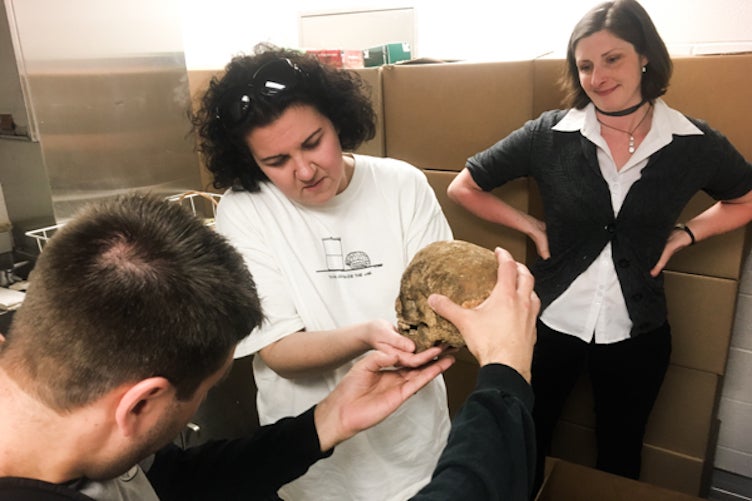
Ultimately, they’ll want to figure out the skeleton’s gender, age, and other biological profiles.
“The most important thing when you do the profile of a skeleton is a visual analysis,” says Dhody. “The measurements, the calibers, osteometric boards, and your eyes are the most important thing.”
For Leader, the king-sized Snickers bar is the artifacts.
“I’ve never seen a toothbrush like that!” he says as Dhody hands him a discovery from one of the boxes.
Leader says you can learn a lot when objects are associated with human remains. But why would this antique toothbrush be in there?
“Your guess is as good as mine,” Leader says, adding that lots of the skulls appear to have had good teeth.
This entire project is on top of their day jobs. The group launched a crowdfunding campaign and are looking into grants to do a proper analysis.
For its part, PMC Property said it put close to $100,000 dollars toward helping with the project.
“We were glad that we were able to assist with the process,” said Jonathan Stavin, Vice President for PMC. “And all of this was without any legal obligation on our behalf.”
Looking ahead: Piecing together clues of the past
Ultimately, the bones will be laid to rest. Stavin says after going through the necessary protocols, they’ll front the reinterment of the remains at Mount Moria Cemetery, too. That’s where the bodies were supposed to have been moved when the cemetery in Old City closed more than a century ago.
But, before then, Moran hopes to create a field course at Rutgers this summer so students can help out and learn. She and others are curious about what these bones might reveal about the experiences of these long-dead individuals, including, possibly, their actual identities.
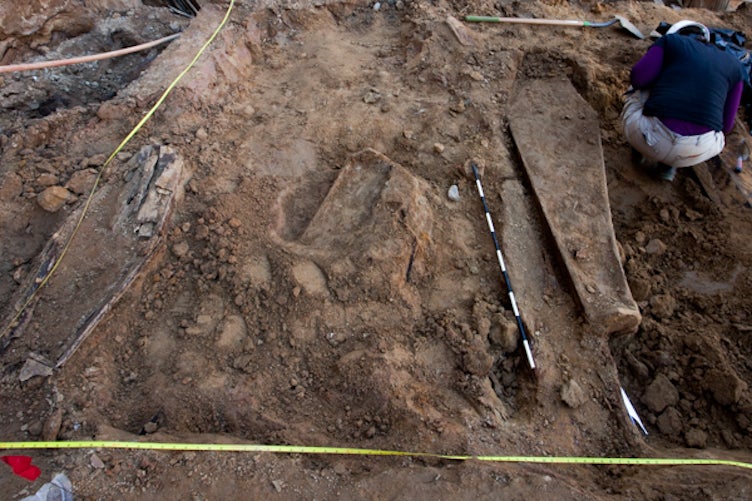
“Who do these bones represent? What were their lives like?” Beatrice says. “We can look at certain indicators in the skeleton that are manifestations of physiological stresses experienced during life, and even in some cases specific pathologies. It can really give us a sense, when combined with demographics, of the hardships that people faced.”
Perhaps, he adds, one can learn more about some of the early epidemics of colonial America.
The group wants to bring the public in on the process.
Overall, the project is going to be a lot of work and will involve some archival sleuthing. But it’s the kind of mystery forensic archaeologists dream of taking on. Beyond that, Moran sees it as a responsibility.
“Ultimately, we’re telling these people’s stories,” Moran says. “The stories were about to be lost, as they were essentially being destroyed in the process of construction. So it’s a wonderful opportunity to help these forgotten people to be remembered.”
WHYY is your source for fact-based, in-depth journalism and information. As a nonprofit organization, we rely on financial support from readers like you. Please give today.



